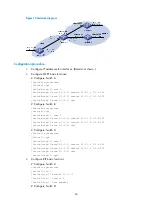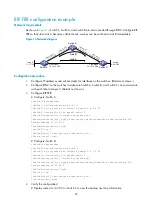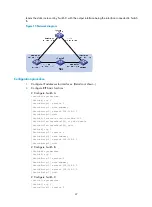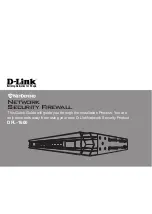
49
State: Inactive Adv Age: 00h12m50s
Tag: 0
When the link over VLAN-interface 100 fails, Switch A can quickly detect the change.
# Display the BFD session information on Switch A.
<SwitchA> display bfd session
Switch A has deleted the BFD session on VLAN-interface 100 to Switch C and displays no output.
# Display the RIP routes of RIP process 1 on Switch A.
<SwitchA> display rip 1 route
Route Flags: R - RIP, T - TRIP
P - Permanent, A - Aging, S - Suppressed, G - Garbage-collect
----------------------------------------------------------------------------
The output shows that the RIP route learned from Switch C no longer exists.
# Display routes destined for 100.1.1.0/24 on Switch A.
<SwitchA> display ip routing-table 100.1.1.0 24 verbose
Routing Table : Public
Summary Count : 1
Destination: 100.1.1.0/24
Protocol: RIP Process ID: 2
Preference: 100 Cost: 2
IpPrecedence: QosLcId:
NextHop: 192.168.2.2 Interface: vlan-interface 200
BkNextHop: 0.0.0.0 BkInterface:
RelyNextHop: 0.0.0.0 Neighbor : 192.168.2.2
Tunnel ID: 0x0 Label: NULL
BKTunnel ID: 0x0 BKLabel: NULL
State: Active Adv Age: 00h18m40s
Tag: 0
Configuring BFD for RIP (bidirectional control detection mode)
Network requirements
In the following figure, Switch A is connected to Switch C through Switch B. VLAN-interface 100 on
Switch A, VLAN-interface 200 on Switch C, and VLAN-interface 200 and VLAN-interface 100 on Switch
B run RIP process 1.
Configure a static route to Switch C on Switch A, and configure a static route to Switch A on Switch C.
Enable BFD on VLAN-interface 100 of Switch A and VLAN-interface 200 of Switch C.
Switch A is connected to Switch C through Switch D. VLAN-interface 300 on Switch A runs RIP process
2; VLAN-interface 400 on Switch C, and VLAN-interface 300 and VLAN-interface 400 on Switch D run
RIP process 1.
Enable static route redistribution into RIP on Switch A and Switch C so that Switch A and Switch C have
routes to send to each other. Switch A learns the static route sent by Switch C, the output interface is the
interface connected to Switch B.
Configure BFD so that when the link between Switch B and Switch C fails, BFD can quickly detect the link
failure and notify it to RIP, and the BFD session goes down. In response, RIP deletes the neighbor
















































